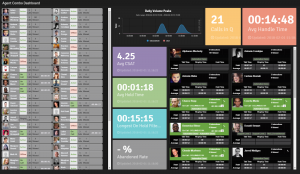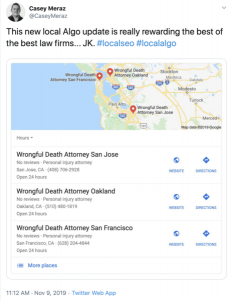Advertisers would love to see unbiased attribution measurement that unifies channel reporting and moves beyond the last-click attribution model, but is Google Attribution the answer? Columnist Andrew Goodman discusses the likely impacts of this new product offering.

Advertisers — especially PPC junkies — want to pay for the highest-converting, most relevant traffic possible. That’s been the obsession of our corner of the digital world for some years now.
Yet in other corners, key players have been roundly accused of taking a wait-and-see approach when it comes to advertisers paying for the least credible, most fraudulent ad impressions and clicks possible.
The problem isn’t an imaginary one. The industry remains plagued with ad platforms that make threadbare claims to effectiveness.
Google is now aiming squarely at both the opportunity and the problem — because most others won’t. They’re rolling out a free version of a powerful, unified marketing attribution solution (now called Google Attribution, available in beta to select advertisers).
Should the average marketer care?
As above-average marketers, I think we should care insofar as it makes our work more meaningful and more accurate. Make no mistake: these tend to be incremental wins nowadays. The big revolution is already behind us; whether through server log mining or users and sessions being tracked via cookies and other means, we’ve long had the data on hand to improve the accountability of advertising.
As Google points out in their “Hello Google Attribution” post, though, most advanced attribution tools are “hard to set up.”
Many advertisers, therefore, go with the default — last-click attribution — and try to use their imaginations as to what kind of ROI they’re “probably” getting “if only” they had better measurement. Not ideal.
When it comes to new customer acquisition in particular, last-click attribution too often assigns 100 percent of the credit to hangers-on in the process: Brand and Remarketing clicks. If, instead, we were able to sprinkle partial credit around to all the previous consumer touch points, we’d be living up to our boast of being “data-driven.”
The lack of (“de-duped”) unified channel reporting currently incentivizes siloed marketers to play adversarial games, pulling for their own channels. It also incentivizes each disparate publisher platform to bias their own conversion tracking in favor of — you guessed it — their own platform’s ad inventory.
So, will Google Attribution fix that? Hey, you in the back, I hear your cynical chuckle. What kind of ploy is this?
Google: Playing sheriff once again (because no one else will)
Yes, Google is self-interested. But often, their self-interest has been served by pushing for stronger industry standards, which in turn improves the user experience and nets Google a little respect. Just think of Google’s meddlesome, but ultimately welcome, interventions into https adoption, site speed and mobile-friendliness.
Nearly every decision Google has to make in the design of Google Attribution — neutral talk of “smart,” “machine-learning” and “data-driven” aside — will pick winners and losers. Not counting the impact of an impression if it wasn’t viewable, or a click if it didn’t behave in a way consistent with non-fraud, may discount nearly 100 percent of the impact of rival networks and publishers. Go figure.
But unless Google itself perpetrates massive and uncharacteristic fraud, these tools themselves will push Google, too, to police its own ad inventory across all Google-owned and partner channels.
Relying on a large monopolistic player to enforce “truth” on an industry is far from a perfect solution. You’d love it if industry bodies or even government regulators would provide some help in that direction. But in the absence of much leadership elsewhere, Google it is.
This is a long game. Even lukewarm responses over the next year from advertisers kicking these tires may be relatively meaningless if Google is onto something: that the future of advertising may well depend on something just like this. The next three or four years will determine whether this tool becomes a trusted industry standard like Google Apps for Business or Android.
Tip of the iceberg
Success — for robust spenders who play in multiple channels, who stand to benefit the most from improved understanding of how consumers are influenced by different touch points — will depend on Google taking this all the way.
Cautious versions of this same idea have been underwhelming to date. Most of the advanced advertisers I talked with, for example, aren’t seeing much difference when they toggle from model to model (Last Click, Position-Based, Linear, Time Decay, Data-Driven) in the recently released Attribution Models in AdWords.
Why? Largely because the various models only take account of AdWords clicks. Without information about all other channels (including organic search) in that mix, we don’t see much improvement in attribution accuracy. In that context, last-click attribution lives on as a reasonable option.
Some business models are ripe for better attribution models
Google Digital Marketing Evangelist Avinash Kaushik has counseled that advertising spending shouldn’t be a “faith-based initiative.” Yet in some industries, a lucky few instinctive players have gotten rich acting that way and throwing heavy spending at certain channels that “seem” to work. That works (for the lucky and instinctive) because many growth strategies are in fact hard to measure; the genius of the spend only becomes clearly obvious years or decades after the fact.
Long buy cycles pose a particular challenge for marketing attribution. Long research phases and tire-kicking are commonplace in B2B, but not only there. Let’s think about a business that has to win over consumers before they can have a conversation with certain suppliers. That big consumer spend is the unsung hero of the business, and that brand-building process takes place over a long period of time.
(Does the Trivago guy really pay for himself? That is not as easy to answer as it seems. What we do know for sure is: no Trivago guy, no company.)
Some companies with an engineering mindset inherently mistrust marketers and are happy when they can show definitive proof of poor marketing ROI. If you’re a PPC professional and you’ve worked for a high-tech startup, you’ve probably noticed that.
In a fight for resources, say the proponents of spontaneous word of mouth, shouldn’t product win? Is advertising truly a “tax for being unremarkable?” Come on! That’s jejune. (My answer would be that with the right investments in both product and marketing, resources wouldn’t be as scarce. As marketers, we need to be armed with better tools to demonstrate the impact of that budget. Although maybe it would be easier just to repeat the mantra, “No Trivago Guy, No Company.”)
Three potential outcomes of Google Attribution
Let’s turn to some likely impacts of Google Attribution if it works the way it should. Therein lies its genius — and its limitations.
First, moving credit around within the AdWords silo won’t help anyone hit the jackpot. But helpfully, it may reduce incentives for AdWords marketers to overspend on last-click-seeking interactions within AdWords. Some PPC managers (shhh!) overspend on remarketing audiences only as a form of retaliation for misleading conversion-sniping that goes on in other channels.
As for such shenanigans — zap! — siloed marketers who engage in competitive “last-click seeking” and generalized attribution inflation (which may lead to double- and triple-counting) will be neutralized and humbled. That’s the second, and most hopeful, takeaway from unifying attribution with a trustworthy clearinghouse for attribution data. To tell a long story in brief: Just because Facebook called it a conversion, AdRoll taught your team how to turn up Remarketing to 11, or someone came in and purchased through a branded organic click, shouldn’t mean we suddenly begin overspending in Facebook, tripling your remarketing budget, or handing wads of thank-you cash to the SEO team. Fair credit is due to every channel — but no more.
Finally, I see a neutral to slightly negative outcome in the realm of hard-to-measure media like display, especially long-running, drip-drip display advertising that is used more for brand-building with some vestiges of performance thrown in. The influence of this media varies so widely it’s difficult, at this point, to trust any new attribution technology to be able to sort out the wheat from the chaff.
The problem here is if the “science” starts arbitrarily assigning credit (even partial credit) to interactions that don’t have nearly as much true influence as the models claim for them. Perhaps that’s not terribly hard to address: calibrate the model to be skeptical and only take seriously interactions which seem somehow related (or close in time) to a significant conversion event.
With enough data, you could safely discount the influence of a lot of spend. But would you be discounting precisely the juiciest part? The rare business models where the instinctive, faith-based advertiser somehow wins from a decision to say to heck with the truisms and just spend heavily where others fear to tread? After all, if the performance case is rock solid, surely everyone else will know that, and the rising price of the media will ultimately make profit elusive?
Certainly, any approach to partial credit should err on the side of conservatism. There is a massive problem with crediting “view-through” conversions. If enough ad impressions are paid for and shown near humans, nearly every purchase made online could be affiliated with a prior ad view.
Have a formula that assigns a “reasonable” amount of fractional credit to prior ad impressions or even crap clicks? Someone out there will find a way to slash the price of those interactions to the bone so that advertisers can buy ten times more of that thing. If Google Attribution becomes the gold standard, some sneaky publishers and networks will say to themselves, “Let the gaming begin.”
Models that are looking to be clever enough to assign “a little influence” to an interaction, as opposed to none, could well over-credit poor-quality media. But if the model hits back by erring on the side of no influence in too many cases, then we’ve discovered nothing novel about where and how to advertise.
Can we trust free products?
In sum, unbiased attribution measurement that unifies channel reporting and moves beyond the oversimplifications of last-click attribution models would be a sight for sore eyes for many of us. Needless to say, though, questions will remain about the inherent biases of any attribution product operated by the world’s largest seller of online advertising.
Despite the dangers, I’m keeping an open mind. Today’s vendor landscape is littered with those who will simply pull (potentially biased) analytics data from multiple platforms into a reporting dashboard. Google is virtually the only company that has the capacity to intelligently “de-dupe” attribution credit — or, put another way, to subtly assign partial credit across channels in a fair and actionable manner.
Right out of the gate, though, let’s push Google to maximize the information made available on demand. If the claim is that Google Attribution can help us unify information from various channels and devices, we want to be able to see those individual user funnels — including the weights Google’s attribution models assign to different interactions and devices for that user’s conversion.
For such rich data, I’d argue that many advertisers would be willing to pay handsomely for a premium version of the product. There has to be a happy medium between “free and opaque” and the six-figure price tags that seem hard to justify in light of how much data we can access at no cost.
[Article on Search Engine Land.]
Some opinions expressed in this article may be those of a guest author and not necessarily Marketing Land. Staff authors are listed here.
Marketing Land – Internet Marketing News, Strategies & Tips
(94)
Report Post







